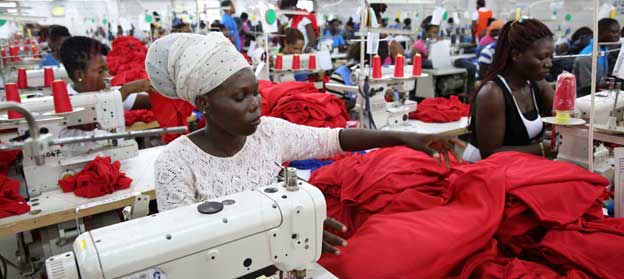
Our Projects are
Transforming African Trade
Quick Contacts
2nd Floor, Fidelity Insurance Centre Waiyaki Way, Westlands

The official start of free trading under the African Continental Free Trade Area (AfCFTA) in January 2021 moved a major continental aspiration closer to reality.
One year later, cross-border trade in goods and services may not exactly be in full swing as had been anticipated, but indications are that there is some progress—the cup is half-full, not half-empty.
A major hurdle is ongoing negotiations on the remaining crucial elements of the trade pact, particularly rules of origin.
However, in an interview with Africa Renewal last month, the Secretary-General of the AfCFTA Secretariat, Wamkele Mene, sketched an optimistic vision of 2022.

In sum, AfCFTA’s implementation will rev into higher gear, traders would be delighted, and the push toward accelerated industrialization of the continent should begin in earnest.
Concluding negotiations on rules of origin, which is basically to determine the “nationalities” of thousands of products to prevent dumping, will be key to success.
Already, negotiators have reached an impressive 87.8 percent agreement on rules of origin. That includes more than 80 percent of the about 8,000 products listed under the World Customs Organisation’s Harmonized System of rules of origin and tariffs. Such a high threshold of consensus guarantees that the vast majority of products can be traded.
“What is outstanding are automobiles, textiles, clothing and sugar. These account for about 12-15 percent of what we call the tariff book. We want to conclude negotiations on these so that we can reach a 100 percent rules of origin convergence,” Mene said.
Mene is convinced that traders in Africa deserve an enabling environment, including robust market information and other incentives to power their businesses.
The Futures Report 2021 launched last December in New York provides traders with valuable business information, making it one more item in the AfCFTA’s toolbox to catalyze intra-African trade.
Jointly produced by the AfCFTA Secretariat and the UN Development Programme (UNDP), the report, titled “Which Value Chains for Made in Africa Revolution”, highlights for market participants value chains with lucrative opportunities in goods and services for value addition.
Noting rising inequalities, the report states that, “Africa is the only continent where the number of poor people increased, up from 392 million in 2000 to 438 million in 2017.”
Africa must “diversify into other commodities… beyond the current commodity cycle traps into different high technology-content industries,” comments Mene, in the foreword to the report. “Africa has 42 of 63 elements for the fourth industrial revolution (4IR), including coltan, cobalt, copper, nickel and graphite, for which global demand will increase by 1,000% by the year 2050.”
UNDP Africa’s Regional Director, Ahunna Eziakonwa, is urging Africa to stop exporting raw materials, but to “industrialize its economies, produce goods rich in African content, and create decent jobs for generations to come.”
In addition to completing 100 per cent negotiations on rules of origin, Mene’s sunny optimism for free trade in Africa in 2022 will depend on other supporting pillars:
The AfCFTA Secretariat and Afreximbank have raised $1 billion for the Adjustment Facility, a good start, although the startup liquidity estimate is between $7 billion and $10 billion.
“We have over 42 currencies in Africa. We want to reduce and eventually eliminate that cost [$5 billion] because it constrains our SMEs’ competitiveness and makes trade costly and inaccessible to many SMEs and young entrepreneurs,” explained Mene.
The UN Conference on Trade and Development (UNCTAD), a champion of AfCFTA’s success and SEZs, reports that there are 237 SEZs—and counting— in 38 African countries.
In anticipation of increased activities in Africa’s free trade area, UNCTAD recommends appropriate policies to enable SEZs to adjust to both “new trade and investment environment in Africa” and “future changes in global value changes and investment patterns.”
Read original article
Disclaimer: The views and opinions expressed in this article are those of the authors and do not necessarily reflect the official policy or position of TradeMark Africa.